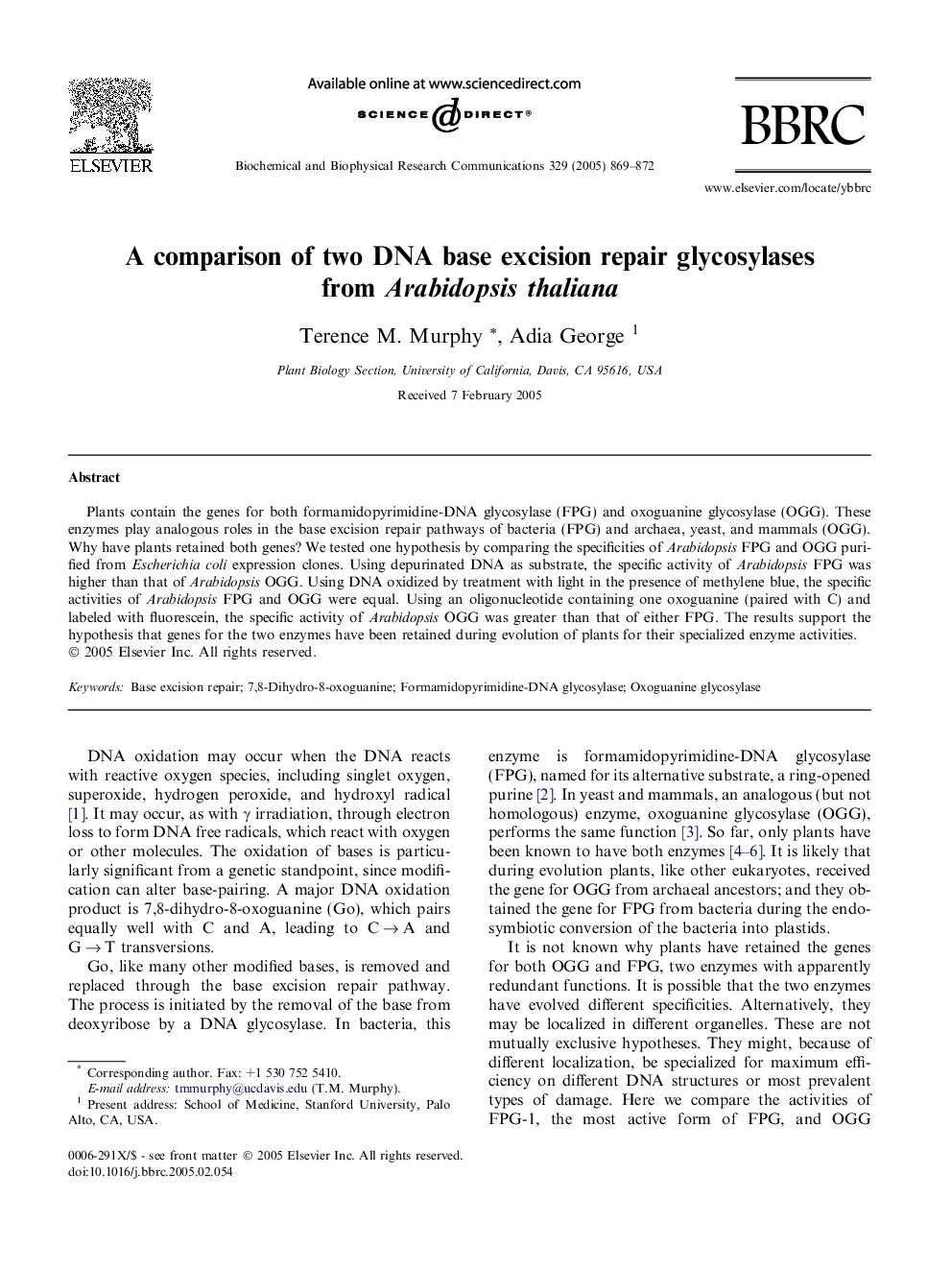| Article ID | Journal | Published Year | Pages | File Type |
|---|---|---|---|---|
| 10771055 | Biochemical and Biophysical Research Communications | 2005 | 4 Pages |
Abstract
Plants contain the genes for both formamidopyrimidine-DNA glycosylase (FPG) and oxoguanine glycosylase (OGG). These enzymes play analogous roles in the base excision repair pathways of bacteria (FPG) and archaea, yeast, and mammals (OGG). Why have plants retained both genes? We tested one hypothesis by comparing the specificities of Arabidopsis FPG and OGG purified from Escherichia coli expression clones. Using depurinated DNA as substrate, the specific activity of Arabidopsis FPG was higher than that of Arabidopsis OGG. Using DNA oxidized by treatment with light in the presence of methylene blue, the specific activities of Arabidopsis FPG and OGG were equal. Using an oligonucleotide containing one oxoguanine (paired with C) and labeled with fluorescein, the specific activity of Arabidopsis OGG was greater than that of either FPG. The results support the hypothesis that genes for the two enzymes have been retained during evolution of plants for their specialized enzyme activities.
Keywords
Related Topics
Life Sciences
Biochemistry, Genetics and Molecular Biology
Biochemistry
Authors
Terence M. Murphy, Adia George,
